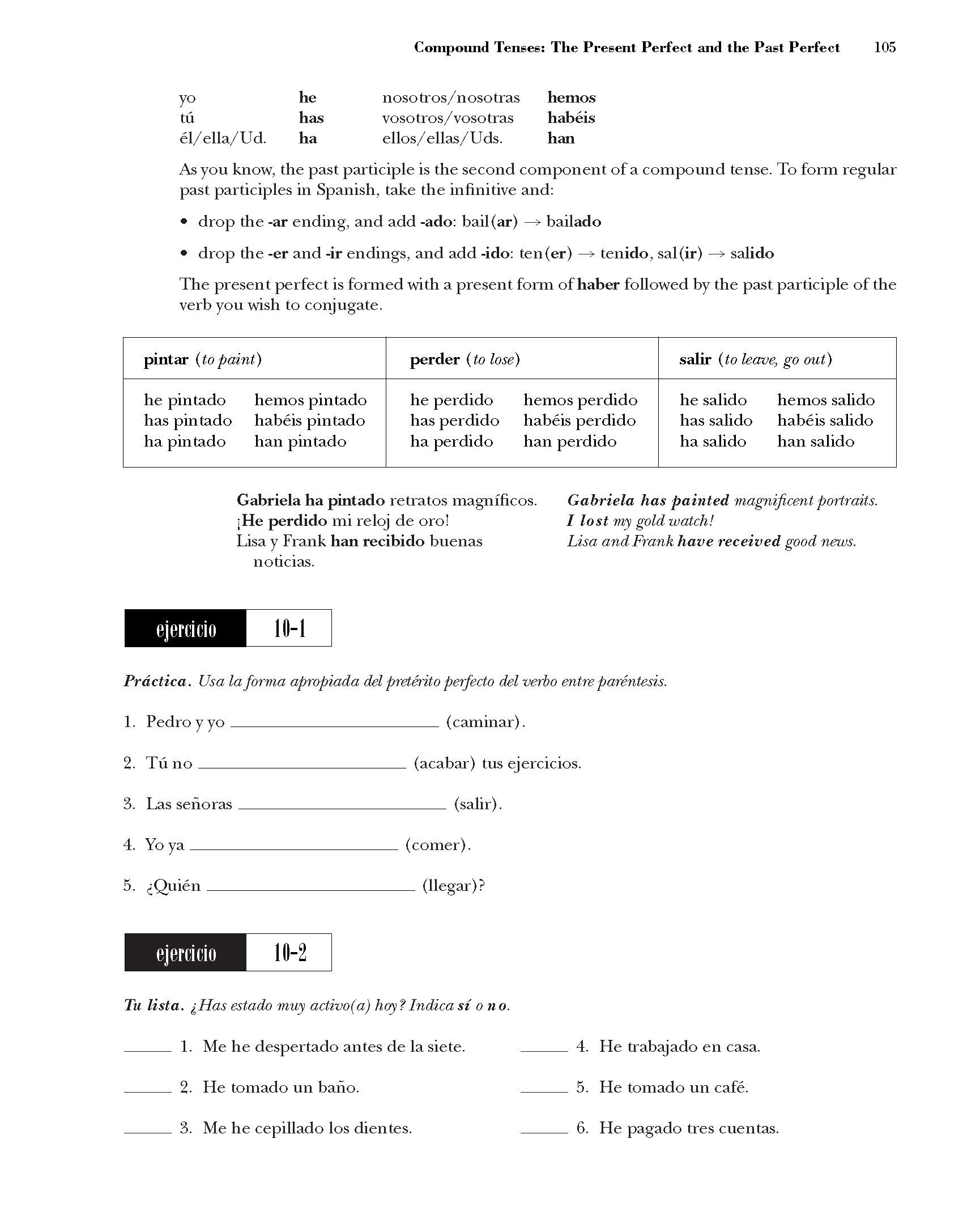CSG116

Compound Tenses: The Present Perfect and the Past Perfect 105
|
yo |
he |
nosotros/n oso tras |
hemos |
|
tu |
has |
vosotros/vosotras |
habeis |
|
el/ella/Ud. |
ha |
ellos/ellas/Uds. |
han |
As you know, the past participle is the second component of a compound tense. To form regular past participles in Spanish, take the infinitive and:
• drop the -ar ending, and add -ado. bail(ar) —> bailado
• drop the -er and -ir endings, and add -ido: ten (er) —> tenido, sal(ir) —> salido
The present perfect is formed with a present form of haber followed by the past participle of the verb you wish to conjugate.
|
pintar (topaint) |
perder (to lose) |
salir (to leave, go out) |
|
he pintado hemos pintado has pintado habeis pintado ha pintado han pintado |
he perdido hemos perdido has perdido habeis perdido ha perdido han perdido |
he salido hemos salido has salido habeis salido ha salido han salido |
Gabriela ha pintado retratos magmficos. i He perdido mi reloj de oro!
Lisa y Frank han recibido buenas noticias.
Gabriela has painted magnificent portraits. I lost my gold watch!
Lisa and Frank have received good news.
10-1
Practica. Usa la forma apropiada del preterito perfecta del verbo entre parentesis.
1. Pedroyyo_ (caminar).
2. Tu no_ (acabar) tus ejercicios.
3. Las seńoras_ (salir).
4. Yoya_ (comer).
5. ^Quien
(llegar)?
Tu lista. iHas estado muy activo(a) hoy? Indica si ono.
_ 1. Me he despertado antes de la siete.
_ 2. He tornado un bano.
_ 3. Me he cepillado los dientes.
4. He trabajado en casa.
5. He tornado un cafe.
6. He pagado tres cuentas.
Wyszukiwarka
Podobne podstrony:
CSG120 Compound Tenses: The Present Perfect and the Past Perfect 109Wlieii Is the Present Perfect Te
CSG118 107 Compound Tenses: The Present Perfect and the Past Perfect • Irregular past participles in
CSG122 Compound Tenses: The Present Perfect and the Past Perfect 111ejercicio10-11 Practica. Usa el
CSG124 Compound Tenses: The Present Perfect and the Past Perfect 113 10-16ejercicio Sorpresas en una
CSG132 121 Compound Tenses: The Futurę Perfect and the Conditional Perfect 6. Habr
CSG134 123 Compound Tenses: The Futurę Perfect and the Conditional PerfectOne Morę Use of the Condit
CSG128 Compound Tenses: The Futurę Perfect and the Conditional Perfect 117 11-3 ejercicio La duda. E
więcej podobnych podstron